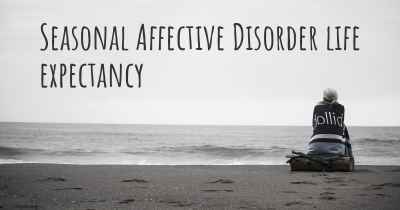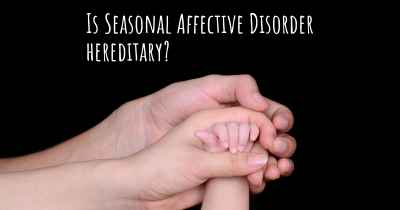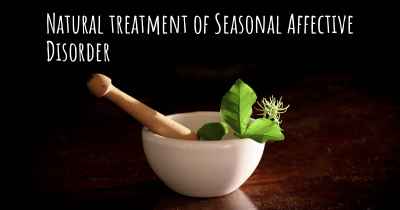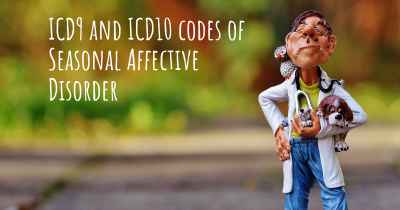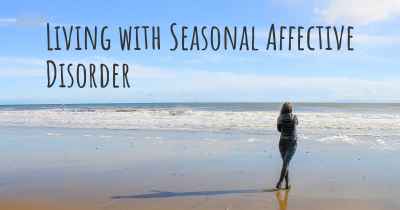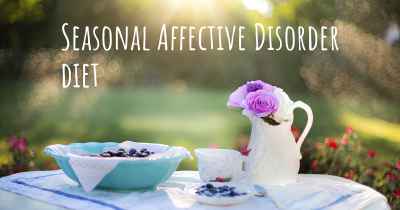8
Which advice would you give to someone who has just been diagnosed with Seasonal Affective Disorder?
See some advice from people with experience in Seasonal Affective Disorder to people who have just been diagnosed with Seasonal Affective Disorder
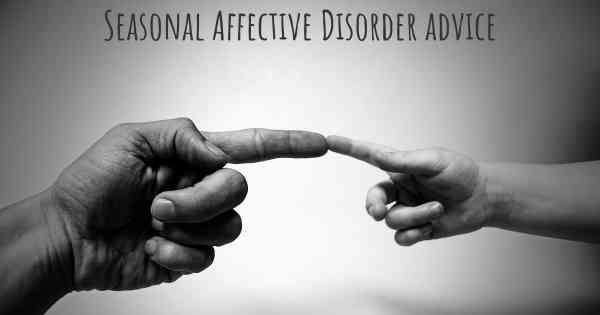
Advice for Dealing with Seasonal Affective Disorder (SAD)
Seasonal Affective Disorder (SAD) is a type of depression that typically occurs during the fall and winter months when daylight hours are shorter. If you have recently been diagnosed with SAD, it is important to remember that you are not alone and that there are steps you can take to manage and alleviate your symptoms. Here are some pieces of advice to help you cope with SAD:
- Seek Professional Help: It is crucial to consult with a healthcare professional, such as a psychiatrist or therapist, who specializes in mood disorders. They can provide an accurate diagnosis, offer personalized treatment options, and guide you through the process of managing SAD.
- Light Therapy: Light therapy, also known as phototherapy, is a common treatment for SAD. Exposing yourself to bright artificial light, typically from a lightbox or lamp, can help regulate your body's internal clock and improve your mood. Consult your healthcare professional to determine the appropriate duration and intensity of light therapy for your specific needs.
- Get Outside: Even though the winter weather may be less inviting, spending time outdoors during daylight hours can be beneficial. Natural light, even on cloudy days, can help boost your mood and regulate your circadian rhythm. Take a walk, go for a hike, or simply sit outside for a while to soak up some sunlight.
- Exercise Regularly: Engaging in regular physical activity has been shown to alleviate symptoms of depression, including those associated with SAD. Exercise releases endorphins, which are natural mood boosters. Aim for at least 30 minutes of moderate exercise most days of the week. Choose activities you enjoy, such as walking, swimming, or dancing.
- Practice Self-Care: Prioritize self-care activities that promote relaxation and well-being. This may include taking warm baths, practicing mindfulness or meditation, engaging in hobbies you enjoy, or spending quality time with loved ones. Taking care of your mental and emotional health is essential in managing SAD.
- Establish a Routine: Creating a consistent daily routine can help provide structure and stability, which is particularly important when dealing with SAD. Set regular sleep and wake times, plan activities that bring you joy, and ensure you have time for self-care. Having a routine can help combat feelings of lethargy and maintain a sense of normalcy.
- Consider Medication: In some cases, healthcare professionals may prescribe antidepressant medication to help manage SAD symptoms. Medication can be an effective tool in conjunction with other treatments. Discuss the potential benefits and side effects with your doctor to determine if it is the right option for you.
- Connect with Support: Reach out to friends, family, or support groups who can provide understanding and empathy. Sharing your experiences with others who have SAD can be comforting and may offer valuable insights and coping strategies. Additionally, consider joining online communities or forums dedicated to SAD for ongoing support.
- Monitor Your Symptoms: Keep track of your symptoms and their severity over time. This can help you identify patterns and triggers, allowing you to better manage your condition. Use a journal or a mood tracking app to record your emotions, energy levels, and any other relevant information that may assist your healthcare professional in tailoring your treatment plan.
- Stay Positive and Patient: Remember that SAD is a treatable condition, and with the right combination of strategies, you can effectively manage your symptoms. Be patient with yourself and celebrate small victories along the way. Maintain a positive mindset and trust that brighter days are ahead.
By following these suggestions and working closely with your healthcare professional, you can develop a personalized plan to effectively manage your Seasonal Affective Disorder. Remember, there is hope, and with the right support and strategies, you can overcome the challenges associated with SAD.
Diseasemaps
